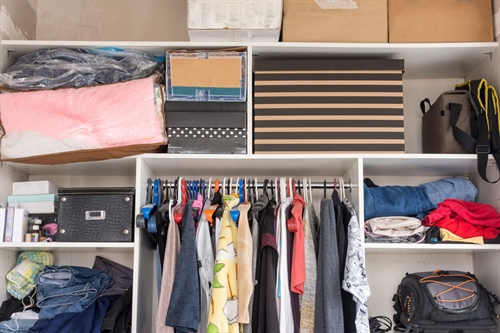Renting an empty unit to store your goods makes sense if your domestic items are packed into boxes. But if you are a more active storage user – for example, if you regularly go to your storage unit to pull out an item of formal clothing that you want to wear; or if you use storage for a collection or tools – you’ll want to organise your stored goods so you have easy access.
Use shelving to organise your stored goods
It makes sense to arrange a collection on shelves so you can see what you’ve got. But can you install specialist shelving in your storage unit? This depends on your storage company. Some companies will let you do pretty much what you like inside your storage unit. Others will ask that you don’t fix anything to the wall.
Open shelving in a home setting can attract dust. With a good quality storage unit, particularly if there is climate control, this should be less of a problem. You may still need to give your shelved items the occasional dust, though.
Shelves can be handy if you have stored your goods in boxes or crates. Using standard-sized boxes makes it easy to find a shelving system to use, and you won’t have to search through a stack of boxes to find the item you need.
Clothing rails make it easy to find stored garments
Clothing rails on wheels are a convenient, efficient way to store hanging garments. You can make the best use of space because you can move rails to get to the one you want. And when you need to move all your stored clothes, clothing rails can be wheeled straight into a van.
Bear in mind that you’ll want rails for full-length clothing as well as half-height clothing rails. It’s worth spending a little extra to get good quality hangers, as they will make it easier to care for your clothes. Hangorize has some advice on the different clothes hanger options (and there are more than you’d think).
Some clothes – like knitwear – will lose their shape if they are hung. They should be folded and stored in boxes or on shelves. Don’t forget to protect stored natural fibres and leather against moth and pests.
There are many wardrobe organising systems available, and many of them would fit nicely into a storage unit. With a non-domestic setting, you don’t have to worry so much about the look of your storage system.
Organise your storage with furniture you already have
If you’re storing a bookshelf or a wardrobe, it makes sense to use them for their intended purpose. This makes your clothing or books and media easy to find, so you’ll be more likely to use them.
Seek out specialist storage companies
Some storage companies have units specifically designed for a certain type of item – for example, bottles of wine. A quick search of ‘self-storage for (your item)’ should turn up some local options. Specialist storage will give you maximum peace of mind, particularly if you are keeping high-value goods. Specialist self-storage might mean you have to pay more for the service, but the peace of mind and convenience will often be worth it. Don’t forget to insure your stored goods, too. You can often save a bit of money by shopping around for self-storage insurance.
A last word about inventories
Whatever storage system you use, an inventory will take your storage organising to the next level. Many storage centres, as well as insurance companies ask you for an inventory, but it doesn’t need to be detailed. However, a detailed inventory will help you keep track of what you have in your unit, and make it easy to find whatever item you need. To find out more about the power of self-storage inventories, see our post.




